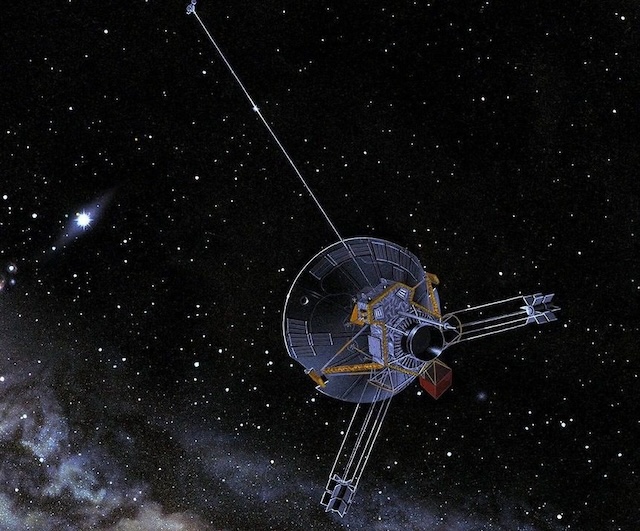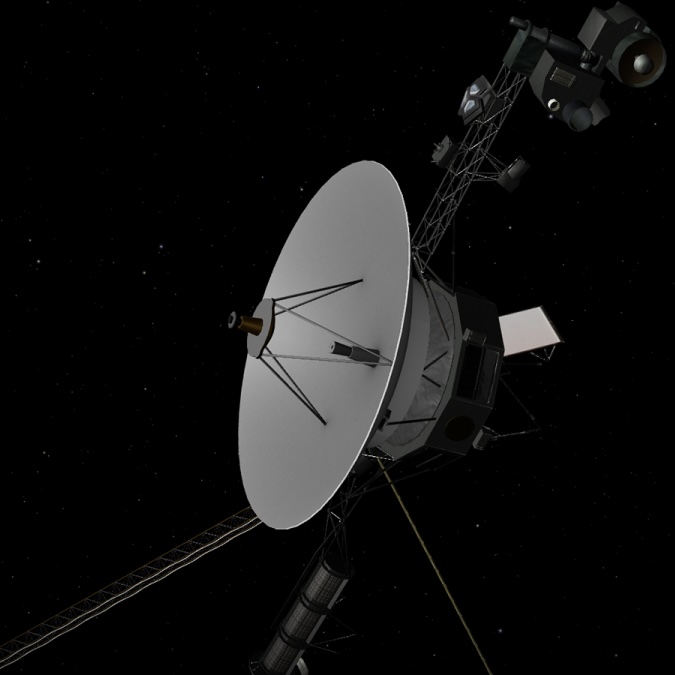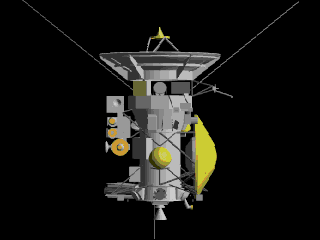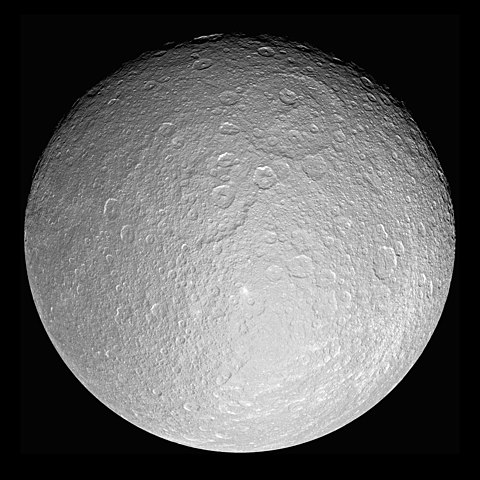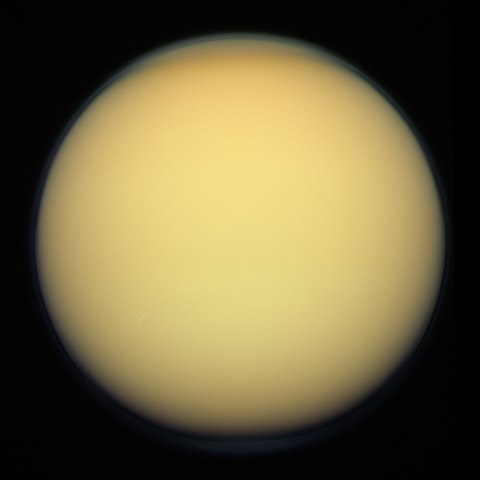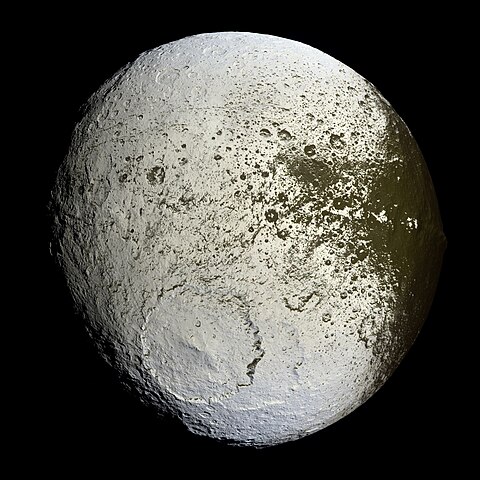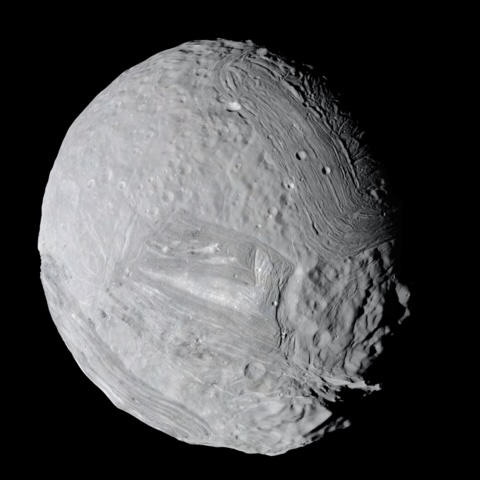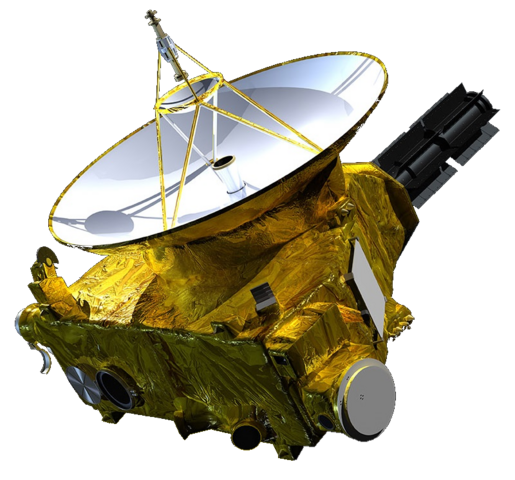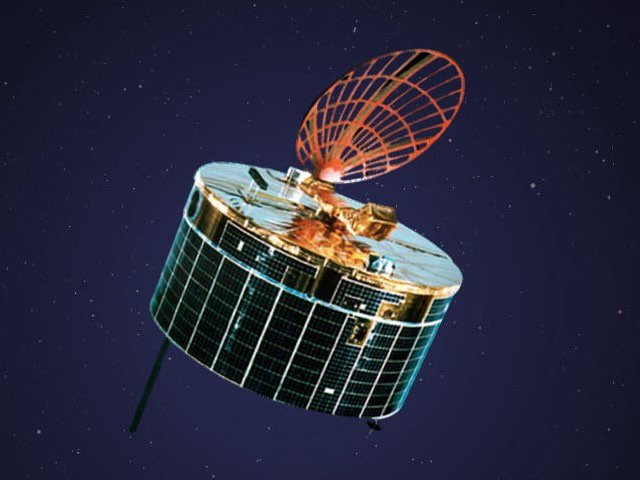1 day / second
0.5 AU
Hyperion
Moon of Saturn
A sponge-like moon with an extremely chaotic rotation, characterized by its irregular shape and unusual surface texture filled with deep craters that give it a distinctive porous appearance.
Key Facts
learn more | Wikipedia |
mass | 5.5510e+18 kg |
radius | 135 km |
semi-major axis | 1,481,009 km |
eccentricity | 0.123 |
inclination | 27.16º |
longitude of the ascending node | 0º |
argument of periapsis | 0º |
orbital period | 21.281 days |
surface gravity | 0.002 g |
discovery date | September 16, 1848 |
discovered by | William Lassell, William Cranch Bond, and George Phillips Bond |
name origins | Named after Hyperion, a Titan from Greek mythology |
dimensions | Irregular shape with radius approximately 135 km |
material composition | Water ice with a significant amount of rock |
albedo | 0.3 |
density | Very low density, making it notably porous |
rotation | Chaotic and unpredictable rotation, one of the few known moons with this characteristic |
Parent Planet
Saturn
A massive ringed gas giant with a distinctive yellow-orange hue, known for its extensive system of icy rings and more than 80 moons, including Titan, the only moon in the Solar System with a thick atmosphere.
Spacecraft Visits
Pioneer 11
Flyby
Launched in 1973, visited in 1979
Pioneer 11 made a distant flyby of Saturn's irregular moon Hyperion on September 1, 1979, making no significant observations of the small moon during its historic Saturn system encounter.
Voyager 1
Flyby
Launched in 1977, visited in 1980
Voyager 1 captured detailed images of Saturn's irregularly-shaped moon Hyperion during a flyby on September 1, 1981, revealing its unusual "sponge-like" appearance and chaotic rotation.
Voyager 2
Flyby
Launched in 1977, visited in 1981
Voyager 2 made its closest approach to Hyperion on August 25, 1981, capturing detailed images of the moon's irregular, sponge-like surface from a distance of 470,000 kilometers.
Cassini
Flyby
Launched in 1997, visited in 2005
Cassini performed its closest flyby of Saturn's irregularly-shaped moon Hyperion on September 26, 2005, passing within 500 kilometers of the surface and capturing detailed images of its sponge-like appearance and unusual rotation.


